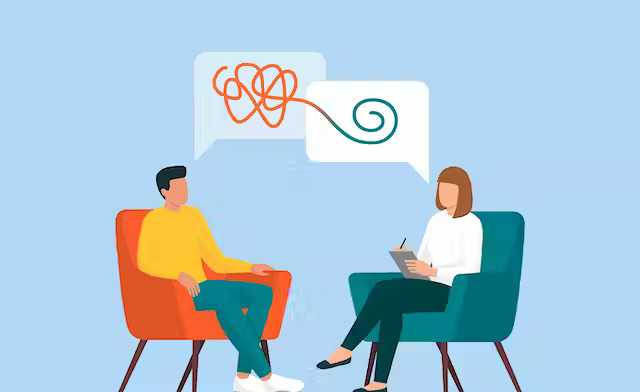New Cure For Autism: Multimodal Therapy (Proven Method)
admin
- 0
In recent times, there’s been a lot of talk about a potential cure for autism, and one approach that has gained significant attention is Multimodal Therapy.
This blog aims to shed light on this revolutionary method, which offers hope for those seeking effective autism treatment.
We’ll break down this innovative approach, discuss its benefits, and explore how you can find the best therapy for autism, including autism centers and treatments near you.

Understanding Autism A guide for parents on Austim Diagnosis
Before we jump into the details of Multimodal Therapy, it’s crucial to have a clear understanding of autism. Autism, also known as Autism Spectrum Disorder (ASD), is a developmental condition that affects how individuals interact socially, communicate, and exhibit behavior.
It’s important to note that autism is not an illness; it’s a lifelong condition, and every person on the autism spectrum is unique.
The Quest for Effective Treatment
The idea of finding a “cure” for autism has been a longstanding goal, but it’s crucial to clarify that autism is not a disease, and as such, there’s no one-size-fits-all cure.
Instead, researchers and healthcare professionals focus on developing treatments and therapies that can improve the lives of individuals with autism, helping them reach their full potential.
Introducing Multimodal Therapy
Multimodal Therapy is an innovative and evidence-based approach that combines various therapeutic techniques to address the diverse needs of individuals with autism.
It doesn’t promise to cure autism, but it does offer a path to a better life. This therapy primarily focuses on enhancing communication, social skills, and behavior, which are often challenging areas for individuals with autism.
Key Components of Multimodal Therapy
Multimodal Therapy incorporates several essential components that work together to provide a comprehensive approach to autism treatment:

1. Applied Behavior Analysis (ABA): ABA is a widely recognized therapy that focuses on modifying behavior through positive reinforcement techniques. It helps individuals develop new, positive behaviors and reduce problematic ones.
2. Speech and Language Therapy: Communication can be a significant challenge for individuals with autism. Speech and language therapy assists in improving verbal and non-verbal communication skills, enabling better interaction with others.
3. Occupational Therapy: This type of therapy addresses sensory sensitivities and helps individuals improve their motor skills. It is particularly valuable for helping individuals with daily tasks and routines.
4. Social Skills Training: Many people with autism find social interactions complex. Social skills training equips individuals with the skills needed to build meaningful relationships and navigate social situations more effectively.
5. Sensory Integration Therapy: Sensory sensitivities are common in autism. Sensory integration therapy aids individuals in coping with sensory stimuli and regulating their responses to sensory input.
Read more: Hearing Aid in Bhubaneswar
Finding Autism Centers and Treatment Near You

If you’re seeking autism treatment near you, start by searching for autism centers, clinics, or therapists in your area. Online searches for terms like “autism treatment,” “autism therapy,” or “autism centers” combined with your location can help you identify local providers.
When considering treatment options, here are some essential tips:
1. Check Credentials: Ensure that the providers you consider are qualified and experienced in delivering autism therapies.
2. Success Rates: Research their success rates and read reviews or testimonials from other families who have sought their services.
3. Therapies Offered: Confirm the specific therapies and approaches they offer, and choose those that align with your or your loved one’s needs.
4. Location and Accessibility: Consider the convenience of the location and the accessibility of the center or therapist’s
office.
Read More: Autism-Friendly Home
In Conclusion
While a definitive “cure” for autism remains elusive, Multimodal Therapy stands out as a promising approach for enhancing the lives of individuals with autism. It combines various therapeutic techniques to address their unique needs, offering a brighter and more fulfilling future.
If you or a family member is searching for the best therapy for autism, don’t hesitate to explore the possibilities that Multimodal Therapy presents. By reaching out to autism centers or qualified professionals near you, you can embark on a journey toward a more enriched life for those on the autism spectrum.
Know About : Autism Treatment in Bhubaneswar
FAQs about Multimodal Therapy for Autism
1. What is Multimodal Therapy, and how does it differ from other autism treatments?
Multimodal Therapy is an innovative approach that combines various therapeutic techniques to address the diverse needs of individuals with autism.
2. Can Multimodal Therapy cure autism?
Instead, it offers a comprehensive approach to improve the lives of individuals with autism by addressing specific challenges such as communication, social skills, and behavior.
3. Which components are included in Multimodal Therapy for autism?
Multimodal Therapy integrates key components, including Applied Behavior Analysis (ABA), Speech and Language Therapy, Occupational Therapy, Social Skills Training, and Sensory Integration Therapy.
4. How can I find autism centers or therapists offering Multimodal Therapy near me?
Start by searching online using terms like “autism treatment” or “autism centers” along with your location.
5. Is there a cure for autism, and why is Multimodal Therapy considered promising?
However, Multimodal Therapy is considered promising as it focuses on enhancing specific areas such as communication and social skills, offering a path to a better life for individuals on the autism spectrum.


